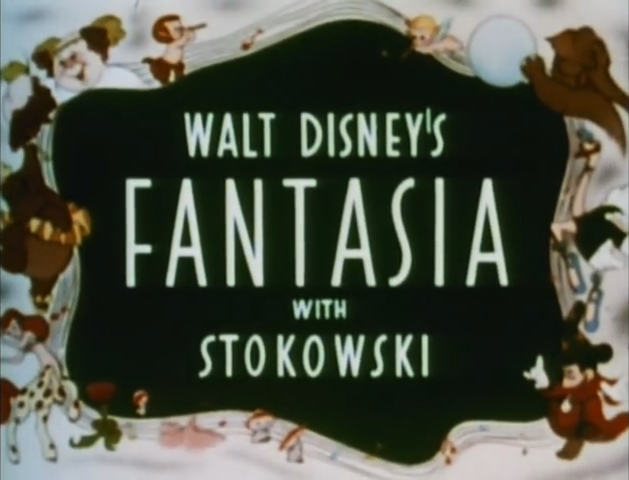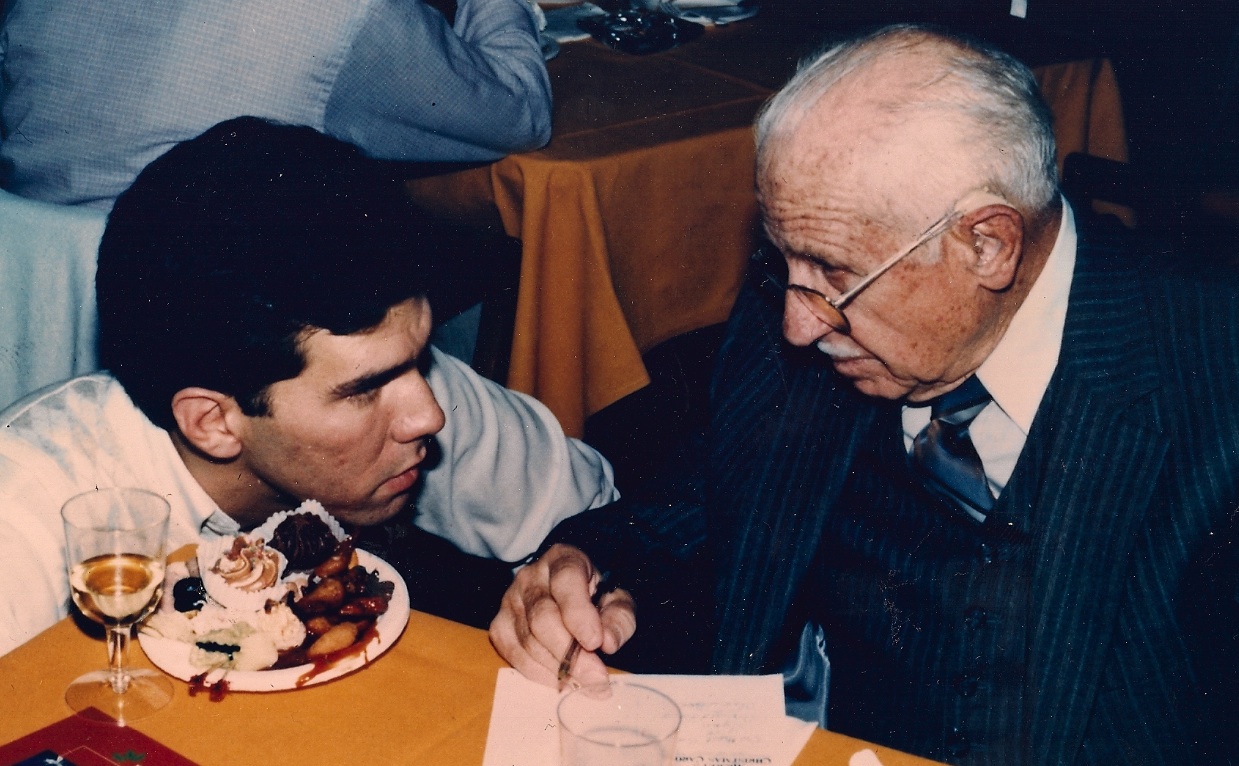|
Carl Fallberg
Carl Robert Fallberg (September 11, 1915 – May 9, 1996) was a writer/cartoonist for animated feature films and T.V. cartoons for Disney Studios, Hanna-Barbera, and Warner Brothers. He also wrote comic books for Dell Comics, Western Publishing, and Gold Key Comics. Early life Carl Robert Fallberg was born in Cleveland, Tennessee on 11 September 1915 to Carl Fallberg (Sr.), and Gunhild Fallberg (née Sjöstedt), who both taught music at the Centenary College Conservatory in Cleveland, Tennessee from 1910 to 1917. Carl was the middle child of three, with an older sister Lisa Lina "Dixie" and younger sister Elinor Faith. The family moved to Chicago, and in 1930 his mother died, leaving Carl and his two sisters motherless for several years. Carl attended Nicholas Senn High School in Chicago, Illinois. In 1934, Carl sent a letter with samples of his gag ideas and artwork to Walt Disney asking for employment. On the third try, he was offered a job and started to work for Walt Di ... [...More Info...] [...Related Items...] OR: [Wikipedia] [Google] [Baidu] |
Cleveland, Tennessee
Cleveland is the county seat of and largest city in Bradley County, Tennessee, United States. The population was 47,356 at the 2020 census. It is the principal city of the Cleveland metropolitan area, Tennessee (consisting of Bradley and neighboring Polk County), which is included in the Chattanooga–Cleveland–Dalton, TN–GA–AL Combined Statistical Area. Cleveland is the sixteenth-largest city in Tennessee and has the fifth-largest industrial economy, having thirteen Fortune 500 manufacturers. History Early history For thousands of years before European encounter, this area was occupied by succeeding cultures of indigenous peoples. Peoples of the South Appalachian Mississippian culture, beginning about 900-1000 CE, established numerous villages along the river valleys and tributaries. In the more influential villages, they built a single, large earthen platform mound, sometimes surmounted by a temple or elite residence, which was an expression of their religious and p ... [...More Info...] [...Related Items...] OR: [Wikipedia] [Google] [Baidu] |
Fantasia (1940 Film)
''Fantasia'' is a 1940 American animated musical anthology film produced and released by Walt Disney Productions, with story direction by Joe Grant and Dick Huemer and production supervision by Walt Disney and Ben Sharpsteen. The third Disney animated feature film, it consists of eight animated segments set to pieces of classical music conducted by Leopold Stokowski, seven of which are performed by the Philadelphia Orchestra. Music critic and composer Deems Taylor acts as the film's Master of Ceremonies who introduces each segment in live action. Disney settled on the film's concept in 1938 as work neared completion on ''The Sorcerer's Apprentice'', originally an elaborate '' Silly Symphony'' cartoon designed as a comeback role for Mickey Mouse, who had declined in popularity. As production costs surpassed what the short could earn, Disney decided to include it in a feature-length film of multiple segments set to classical pieces with Stokowski and Taylor as collaborators ... [...More Info...] [...Related Items...] OR: [Wikipedia] [Google] [Baidu] |
Chip 'n' Dale
Chip and Dale (also spelled Chip 'n' Dale) is a cartoon duo of anthropomorphic chipmunks created in 1943 by The Walt Disney Company. Concept The characters were first drawn by Bill Justice and introduced in the 1943 Pluto short ''Private Pluto'', directed by Clyde Geronimi. In the short, they fight with Pluto about whether they can store their nuts in a military base cannon. Three years later, director Jack Hannah decided to use them as co-stars in Donald Duck shorts. Hannah said: Of the two, Chip is portrayed as being safe, focused, and having a mind for logical scheming. Dale, by contrast, is more laid-back, dim-witted, and impulsive, and has a very strong sense of humor. Originally the two had a very similar appearance, but as a way to tell them apart, some differences were introduced: Chip has a small black nose and two centered protruding teeth, whereas Dale has a large dark red nose and a prominent gap between his buckteeth. Chip is also depicted as having smooth ... [...More Info...] [...Related Items...] OR: [Wikipedia] [Google] [Baidu] |
Goofy
Goofy is a cartoon character created by The Walt Disney Company. He is a tall, Anthropomorphism, anthropomorphic dog who typically wears a turtle neck and vest, with pants, shoes, white gloves, and a tall hat originally designed as a rumpled fedora. Goofy is a close friend of Mickey Mouse and Donald Duck, and Max Goof's father. He is normally characterized as hopelessly Accident-proneness, clumsy and Stupidity, dim-witted, yet this interpretation is not always definitive; occasionally, Goofy is shown as intuitive and clever, albeit in his own unique, eccentric way. Goofy debuted in animated cartoons, starting in 1932 with ''Mickey's Revue'' as Dippy Dawg, who is older than Goofy would come to be. Later the same year, he was re-imagined as a younger character, now called Goofy, in the short ''The Whoopee Party''. During the 1930s, he was used extensively as part of a comedy trio with Mickey Mouse, Mickey and Donald. Starting in 1939, Goofy was given his own series of shorts that ... [...More Info...] [...Related Items...] OR: [Wikipedia] [Google] [Baidu] |
Gyro Gearloose
Gyro Gearloose is a cartoon character created in 1952 by Carl Barks for Disney comics. An anthropomorphic chicken, he is part of the Donald Duck universe, appearing in comic book stories as a friend of Donald Duck, Scrooge McDuck, and anyone who is associated with them. He was also a heroic creator star of the animated ''DuckTales''. He first appeared in the Carl Barks comic "Gladstone's Terrible Secret" (''Walt Disney's Comics and Stories'' #140, May 1952), and was the regular lead character in 4-page backup stories in Barks' issues of ''Uncle Scrooge'', starting with issue #13 (March 1956) and continuing through #41 (March 1963). Biography Gyro is Duckburg's most genius inventor, even though his inventions sometimes do not work the way he wants them to. His outrageous productivity is presented as a factor in the quality of his inventions. Because Gyro is always coming up with new ideas, the fact that his inventions often lack an important feature will often cause trouble for ... [...More Info...] [...Related Items...] OR: [Wikipedia] [Google] [Baidu] |
Donald Duck
Donald Fauntleroy Duck is a cartoon character created by The Walt Disney Company. Donald is an anthropomorphic white duck with a yellow-orange bill, legs, and feet. He typically wears a sailor shirt and cap with a bow tie. Donald is known for his semi-intelligible speech and his mischievous, temperamental, and pompous personality. Along with his friend Mickey Mouse, Donald was included in ''TV Guide''s list of the 50 greatest cartoon characters of all time in 2002, and has earned a star on the Hollywood Walk of Fame. He has appeared in more films than any other Disney character, and is the most published comic book character in the world outside of the superhero genre. Donald Duck appeared in comedic roles in animated cartoons. Donald's first theatrical appearance was in ''The Wise Little Hen'' (1934), but it was his second appearance in ''Orphan's Benefit'' that same year that introduced him as a temperamental comic foil to Mickey Mouse. Throughout the next two decades, Don ... [...More Info...] [...Related Items...] OR: [Wikipedia] [Google] [Baidu] |
Scrooge McDuck
Scrooge McDuck is a cartoon character created in 1947 by Carl Barks for The Walt Disney Company. Appearing in Disney comics, Scrooge is a Scottish-American anthropomorphic Pekin duck. Like his nephew Donald Duck, he has a yellow-orange bill, legs, and feet. He typically wears a red or blue frock coat, top hat, pince-nez glasses, and spats varying in color. He is portrayed in animation as speaking with a Scottish accent. Originally intended to be used only once, Scrooge became one of the most popular characters in Disney comics, and Barks' signature work. Scrooge lives in the city of Duckburg (which is also Donald Duck's, and Huey, Dewey, and Louie's home city) in the fictional US state of Calisota (a blend of California and Minnesota), whose claimed location is in California in the real-world United States. Named after Ebenezer Scrooge from Charles Dickens' 1843 novella '' A Christmas Carol'', Scrooge is an incredibly rich business magnate and self-proclaimed "adventure ... [...More Info...] [...Related Items...] OR: [Wikipedia] [Google] [Baidu] |



